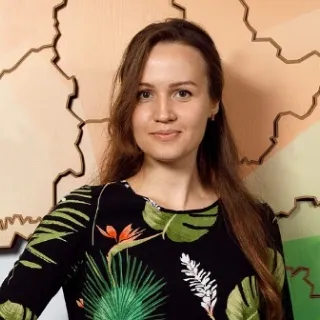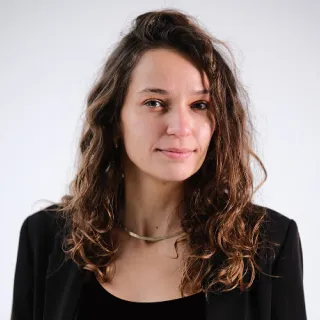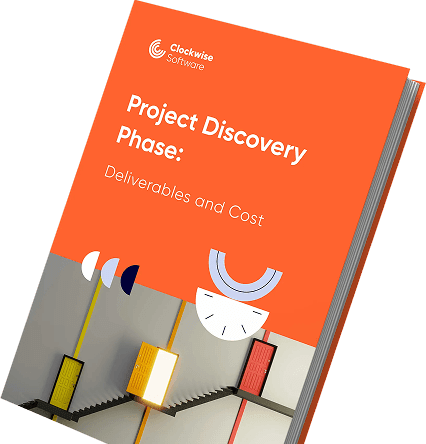How We Run Project Discovery
In 4–8 weeks of project discovery, we save clients from months of wasted development time and hundreds of thousands in rework.
$30K+
client cost savings
<10%
CPI/SPI variance
99.89%
work acceptance rate
Scenarios that call for a discovery phase
Have an idea but need help shaping it:
Founder, early-stage startup
"
Planning to build an e-commerce app, similar to Amazon. Need help developing an MVP.
COO, logistics company
"
We want to build a mobile app for employee scheduling. Have some thoughts and references, haven't done specs or design yet.
Have done some prep but need clarity:
PO, proptech company
"
We have wireframes, need help with finalizing the scope and building the product.
Co-founder, marketplace
"
Looking for help building a job-matching platform for creatives. We’ve worked with a designer and have a basic UI kit + early flows.
Have a product but need to fix or rebuild it:
CTO, health tech product
"
Our current app is live but was rushed. Thinking of rebuilding from scratch.
CEO, B2B SaaS
"
The current version is live, but we're hitting limitations. Looking to re-architect and add new features.
First step:
Scope clarification and ballpark estimates
Duration: ~1 week
Cost: Free
Before we talk about contracts, we hop on a few free calls to help you get oriented.
Our BA, PM, and sometimes a designer or tech lead join in to ask about your goals, vision, and what you already have, whether it’s a rough idea, slides, or something more. (And don’t worry — we sign an NDA so your project details stay confidential!) Next, we turn all of this into a rough breakdown: key blocks, major tasks, and initial tech assumptions. On the next call, we have a draft structure to show and can ask sharper questions to refine the scope.

Tetiana
Business Analyst
“Most of the time, clients don’t show up with a neat list of business requirements. It’s usually some screenshots, spreadsheets, rough mockups, or just a list of features they have in mind — and that’s totally fine. That’s what we’re here to unpack.”

Mykyta
Business Analyst
“I listen and build a picture of how the system works or how you imagine it should. That becomes the skeleton of the product: we break it into blocks, outline the big tasks in each one, add the tech bits — everything we need to start seeing where the dev time will go.”
This way, before we talk about continuing our partnership, you’ve got a rough work breakdown structure (WBS), risk register, and tech approach, as well as ballpark estimates — just enough to get a sense of what the road ahead looks like.
At this point, you look at the early plan, the ballpark estimates, and the direction.
And if it clicks, we move into full discovery: the part where we map every detail and give you maximum accuracy.
Deliverables you'll get
Discovery wraps with a full toolkit for your product in the form of structured, dev-ready documentation:
Work breakdown structure (WBS)
User stories & acceptance criteria
Data dictionaries / data flow diagram
Wireframes & UI kit
Tech approach
Architecture diagram
Risk register
Development plan & timeline
Project estimate
Team composition
Communication plan
Work breakdown structure (WBS)
“Basically, I break the product into modules and features, mapping out the work ahead. It gives you and the dev team a clear picture of what needs to be built — and helps us estimate time and effort.”
The people behind discovery

Bogdan
Head of Delivery
10 y. of experience
Set up delivery with 99.88% acceptance rate

Andrii
Project Manager
8 у. of experience
30+ projects delivered

Evgeniya
Project Manager
5+ y. of experience
Managed and delivered 5 SaaS and ERP projects

Yana
Design Lead
12 y. of experience
100% UI/UX acceptance rate after user tests

Tetiana
Business Analyst
5 y. of experience
Saves $30K on avg./client with discovery

Mykyta
Business Analyst
6+ y. of experience
Shaped FinTech, entertainment, and other products
01 | 04
Rough time & cost estimates
Small package
From $12,000
Timeline: 3–5 weeks
Medium package
From $16,000
Timeline: 5–7 weeks
Large package
From $25,000
Timeline: 8–10 weeks
Get what you need, skip what you don’t
The distribution of deliverables here is just an example.
We suggest packages and deliverables based on your project size and needs.
If you want to choose a package yourself and go with a smaller one first, we’ll let you know if it’s enough to cover the scope and call out any risks before you commit.
Testimonials
Let’s make your idea build-ready
We turn notes and half-baked specs into a clear roadmap with <10% budget variance. Tell us about your idea and we’ll help you create a plan.
hello@clockwise.softwareSerhii
Head of Client Relations
Kateryna
Senior Account Executive










